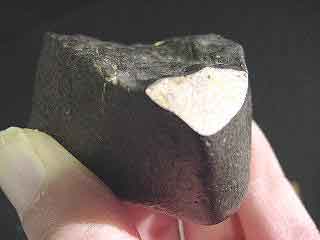
*The type specimen is required according to the Meteoritical Society's guidelines. an analysis by scanning electron microscopy in order to classify it as an H, L or LL.cutting, removing, and preparing a sample.an analysis of the minerals within the meteorite & observations of the texture in order to classify the meteorite,.the costs of making a thin section of each sample,.and a submission to the Meteoritical Society's naming committee for approval.

an analysis of all the relevant trace elements in order to classify the meteorite.$100/sample if the type specimen* is provided.$175/sample if 3 or more samples are provided.$200/sample if the type specimen* is provided, or.$150/sample if the type specimen* is provided.Iron meteoritesĮquilibrated ordinary chondrites (by SEM) Invoices must be paid prior to the work being started. Please contact us for more information.Īll work is guaranteed. Please note that these services are available for laboratories only and are not available to the general public at this time.Ĭlassification services are currently being done on a limited basis. The fees provided below are subject to change. The costs for analysis differ depending on the type of meteorite. In this way we meet all the requirements for new meteorite naming (see What's in a name?). Also, the University of Alberta Meteorite Collection is an official Type Specimen Repository for meteorites-one of only three in Canada.

We have the necessary tools at the University of Alberta to gather all information required to classify a new meteorite of any type. You can watch our "How To Spot a Meteorite" video on this page for more information and you can also use our Meteorite Reporting System to fill out a report and upload photos for an expert to look at. If your rock passes all these tests, you might have yourself a meteorite. When a meteor falls through Earth's atmosphere, the outer surface of the rock melts, forming what's known as a fusion crust. Examine the outer-layer of the specimen for a thin, black, eggshell-like crust.If your specimen does, it's likely slag or some other stony matter. A true meteorite will not have any holes or bubbles at all. Check for holes or bubbles in the specimen.

Nearly all meteorites contain iron-nickel metal and attract magnets easily.


 0 kommentar(er)
0 kommentar(er)
